Women exposed to high levels of fine particulate matter specifically during pregnancy—particularly during the third trimester—may face up to twice the risk of having a child with autism than mothers living in areas with low particulate matter, according to a new study from Harvard School of Public Health (HSPH). The greater the exposure, the greater the risk, researchers found. It was the first U.S.-wide study exploring the link between airborne particulate matter and autism.
“Our data add additional important support to the hypothesis that maternal exposure to air pollution contributes to the risk of autism spectrum disorders,” said Marc Weisskopf, associate professor of environmental and occupational epidemiology and senior author of the study. “The specificity of our findings for the pregnancy period, and third trimester in particular, rules out many other possible explanations for these findings.”
The study appears online December 18, 2014 in Environmental Health Perspectives
Prior studies have suggested that, in addition to genetics, exposure to airborne environmental contaminants, particularly during pregnancy and early life, may affect risk of autism. This study focused specifically on the pregnancy period.
In research released this past October, new research added to a growing body of evidence that links autism to air pollutants such as those generated by cars and trucks.
University of Wisconsin’s Amy Kalkbrenner’s study, published online at the journal Epidemiology, showed that pollution’s impact on autism rates in North Carolina is similar to results of pollution-autism studies in California – despite weather and climate differences between the two states.
In addition, the work of Kalkbrenner and her colleagues, building on previous studies, showed that women in the third trimester of pregnancy were more susceptible to the damaging effects of air pollution on their unborn child.
Earlier this year in a further test of a novel theory that suggests autism is the consequence of abnormal cell communication. The findings, published in Translational Psychiatry, follow up on similar research published last year by senior author Robert K. Naviaux, MD, PhD, professor of medicine, pediatrics and pathology, and colleagues.
Naviaux said the findings fit neatly with the idea that autism is caused by a multitude of interconnected factors: “Twenty percent of the known factors associated with autism are genetic, but most are not. It’s wrong to think of genes and the environment as separate and independent factors. Genes and environmental factors interact. The net result of this interaction is metabolism.”
Naviaux, who is co-director of the Mitochondrial and Metabolic Disease Center at UC San Diego, said one of the universal symptoms of autism is metabolic disturbances. “Cells have a halo of metabolites (small molecules involved in metabolism, the set of chemical processes that maintain life) and nucleotides surrounding them. These create a sort of chemical glow that broadcasts the state of health of the cell.”
Cells threatened or damaged by microbes, such as viruses or bacteria, or by physical forces or by chemicals, such as pollutants, react defensively, a part of the normal immune response, Naviaux said. Their membranes stiffen. Internal metabolic processes are altered, most notably mitochondria – the cells’ critical “power plants.” And communications between cells are dramatically reduced. This is the “cell danger response,” said Naviaux, and if it persists, the result can be lasting, diverse impairment. If it occurs during childhood, for example, neurodevelopment is delayed.
Autism understanding at the Magaziner Center
To really understand autism, we need to look at what has changed during this period of rapid diagnosis of the disorder. We know that genetics hasn’t changed. What has changed are environmental factors, including the increasing number of chemicals we are exposed to from pesticides, flame retardants, plasticizers, solvents, personal care products, medicines, artificial sweeteners and flavors. These varied factors have a clear impact on the expression of our genes.
Each of us is biochemically different, which is why two brothers may have the same genes, but one may develop a disorder mitochondrial dysfunction while the other never does – even if exposed to the same environmental factors in utero or beyond. Simply put, some people are predisposed to react to a chemical substance differently than others.
It has been found that many autistic children have a defect in their ability to excrete certain chemicals; therefore, they were more genetically susceptible to the chemicals’ effects. Many also have and an inability to metabolize high levels of metals which results in neuro-inflammation, oxidative stress, impaired mitochondrial function and neurotransmitter imbalances. They also often have liver toxicity and gastrointestinal problems.
What does this mean for prevention of autism?
While the cause of autism is still not clear, nobody can say definitively as this point that doing one thing or another will completely prevent the disorder. However, looking at the data and reviewing the common denominators in these children, what is clear is that there is an undeniable link between the chemicals found in our environment and autism. The best we can do – to help reduce the numbers and/ or the severity of cases – is to eliminate these chemicals from our lives as much as we can by eating a healthy diet of natural, unprocessed foods rich in vitamins and nutrients, rounding out our diets with nutritional supplements as advised by a healthcare professional and reducing our exposure to phthalates (like those in nail polish), organophosphates (often found in pesticides), PCBs, (found in plastic products including most baby bottles), solvents (found in furniture and new carpets) and heavy metals such as lead and mercury. These measures should, if possible, begin with the mom in the pre- or peri-conception time, at the latest, and continue with the birth of the child.
And what if my child has autism?
At the Magaziner Center for Wellness, our goal is to help maximize a child’s potential by setting up an individualized program aimed at diagnosing and treating often hidden problems that may be impeding his or her development. We support the use of behavioral counseling and speech, physical and occupational therapies that are often recommended as part of the overall treatment regimen.
We analyze each patient individually – because, as I’ve said before, each person is biochemically different and, even among those on the autism spectrum, not every treatment works for every person. We administer safe, nontoxic dietary supplements, antifungal agents, and dietary modifications. We also place great emphasis on the detoxification and evaluation and treatment of toxic metals, including mercury, lead, cadmium and aluminum. Treatment may also include improving digestion and assimilation and asking a child to avoid certain foods which could be harmful to his or her wellbeing. We often recommend hyperbaric oxygen therapy, which greatly increases oxygen uptake to the brain, nervous system, skeletal muscle, and all body tissues and has been been found useful in the treatment of the symptoms of autism.
What’s Next?
While autism is still quite a mystery, great strides have been made in increasing the awareness of the disorder and uncovering some clues to its potential causes. With more research, increased commitment and willingness for doctors and patients alike to ask tough questions and demand a change in our environment, I am confident the next 10 years will yield much better news on this front than the previous decade has.



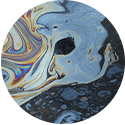
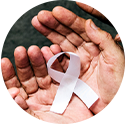

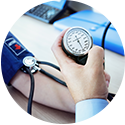
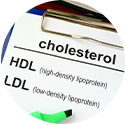

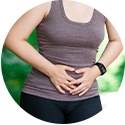

















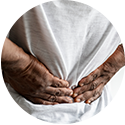








Recent Comments